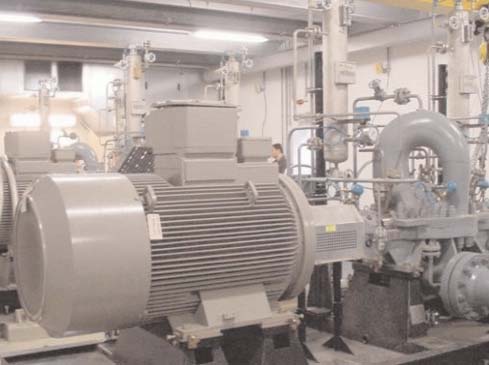Central Europe Pipeline System Programme Board
The Central Europe Pipeline System Programme Board (CEPS PB) is responsible for all policy decisions related to the management of the Central Europe Pipeline System (CEPS); it also approves the annual budgets and the long-term strategic plan. In sum, the Board establishes general policy, objectives, missions, and approves financial resources for the CEPS.

Highlights
- The Central Europe Pipeline System Programme Board is responsible for all policy decisions related to the management of the Central Europe Pipeline System (CEPS).
- It acts with regard to the collective interests of NATO and all countries participating in the CEPS Programme.
- Each participating country has representatives on the Board. Other representatives can participate, but not in the decision-making process.
-
Working mechanisms
The CEPS Programme Board is comprised of representatives from each member of the CEPS Programme.
Each representative on the Board may be assisted by national experts who may participate in the discussions at Board meetings.
Representatives of the NATO Military Authorities (NMAs), the NATO Office of Resources (NOR), the NATO Support and Procurement Agency (NSPA) General Manager, the Programme Manager of the CEPS Programme Office, and the NATO Defence Policy and Planning (DPP) Division’s Petroleum Logistics Office shall be invited to participate in all meetings of the CEPS Programme Board. Additionally, the Board can invite other parties to participate as appropriate.
The CEPS Programme Board meets three times a year, but shall meet as soon as possible in response to a specific request by any member of the CEPS Programme, the Chairperson of the Board, the Representatives of the NATO Military Authorities, Programme Manager of the Programme Office or the General Manager of the NATO Support and Procurement Agency (NSPA).
The CEPS Programme Board shall arrive at all decisions by consensus.
The CEPS Programme Office (CEPS PO) based in Versailles, France, implements the decisions of the CEPS Programme Board and manages the daily operation of the system.
-
Evolution of the Board
Changing institutions
When the CEPS was created more than 50 years ago, there were two governing bodies: the Central Europe Pipeline Office (CEPO) and the Central Europe Pipeline Policy Committee (CEPPC). The former was responsible for all decisions related to the operation of the network and the latter for the general policy and finances. The executive agency, named the Central Europe Operating Agency (CEOA), was created on 1 January 1958.
In 1997, the North Atlantic Council endorsed the new Central Europe Pipeline Management Organisation (CEPMO) Charter approved by the two directing bodies. The Charter defined the structure and responsibilities of the new management organisation of the CEPS: CEPMO, which comprised one single CEPMO Board of Directors (BoD) and the Agency (CEPMA).
On 1 July 2012, the NATO Support Organisation (NSPO) was created by merging the former NATO Maintenance and Supply Organisation (NAMSO), the former NATO Airlift Management Organisation (NAMO) and the former Central Europe Pipeline Management Organisation (CEPMO). The former CEPMO became the CEPS Programme within the NSPO. The former CEPMA became the CEPS Programme Office (CEPS PO) within the NATO Support Agency (NSPA).
In April 2015, the NATO Support Agency (NSPA) became the NATO Support and Procurement Agency, marking the expansion of its capabilities to include all aspects of systems procurement from initial acquisition throughout sustainment.
New challenges
In the post-Cold War period, the Board and the Agency were faced with the challenge of maintaining the necessary CEPS capability with reduced national defence budgets.
The Board decided to help reduce costs by closing down storage and pipeline systems that were no longer needed, and to augment revenues by increasing non-military activities. As a consequence, once military needs are satisfied, the CEPS provides fuel transport for civilian requirements in Central Europe. The military priority clause in all transport and storage contracts ensures that CEPS fulfils its primary role: responding to military needs. However, it has also become an important fuel transporter for civilian use.
The possibility of commercialisation was first authorised by the North Atlantic Council in 1959, but it only became a significant part of daily activities from 1994.
The CEPS is the only NATO programme that combines military and non-military logistics services and provides a very important NATO military capability.
Smart CEPS
In 2011, a review of the current business model was initiated by the former CEPMO Board of Directors. Optimisation of the current business model and rationalisation of the layout of the system were important topics of this review. A new system layout was approved in 2012 with the aim of generating significant cost reductions over the next five years starting in 2013.
